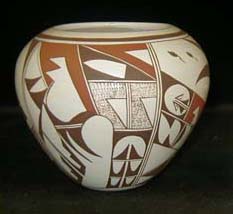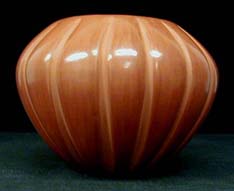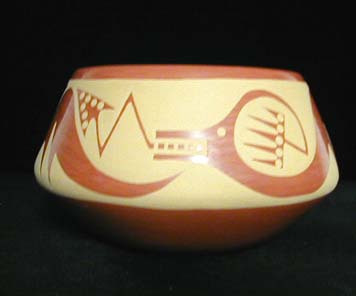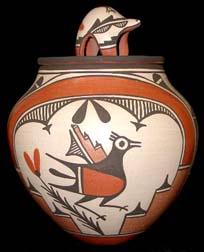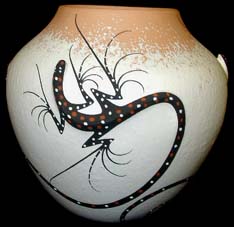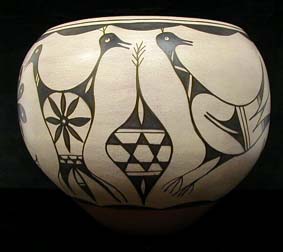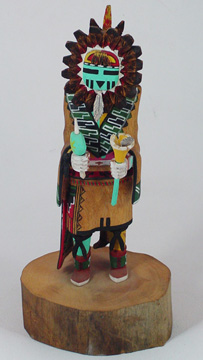Koshari or Koyala (Clown) - Richard Gorman Hopi Katsina Doll
Richard Gorman (1962-- ) resides near Holbrook, AZ with his wife Gloria. Although Richard is welcome in both the Navajo and Hopi tribes, he is considered Hopi, not Navajo. Richard's mother, Clara Pahoema, is Hopi and his father, Bobby Gorman, is Navajo. Both the Hopi and the Navajo consider children to be born into the mother's tribe, clan and family. Because of the Gorman last name Richard is often erroneously identified with the well-known Navajo artist R.C. Gorman. There does appear to be a distant relationship, even though when asked, Richard stated that he is unaware of any. Richard's great uncle on his father's side is Carl Gorman, the noted Navajo code talker form World War II. Likewise, R.C. Gorman's father is also a famous code talker named Carl Gorman. We are unaware of more than one Carl Gorman who was a Navajo code talker!
Richard was born April 20,1962 in Keams Canyon, Arizona and raised on First Mesa, Polacca, Arizona. Richard had little more than a passing interest in art until his stint in the US military. In his early years he was a bit wild and rebellious, however, during his four years in the Army he spent a tour of duty in Germany where he saw the work of Bavarian wood carvers. This had a profound effect on him and he began to envision his own future as a carver after his military duty. He states that his work is influenced by his culture, both Hopi and Navajo, and other artists such as painter/carver, Neil David, Sr., painter, Helen Hardin, jeweler, Charles Loloma, and others. Richard is better known by many collectors, for his paintings as he is more prolific in that medium and he relies on it for a more consistent source of income. He states that painting allows him a greater freedom to experiment and create. It is very therapeutic and soothing for him. The Helen Hardin influence is evident in his abstract work but it is not just an extrapolation of what she did. Richard is moving in his own direction to create his own unique style.
Richard has shown his work at various shows around the country such as the Pueblo Grande Museum, Heard Museum, Eitlejoge Museum, Native American Film Festival in San Francisco, CA, Kansas Indian Market, White Mountain Native American Art Festival and the Gallup Ceremonial. At several of these shows he won awards for both his paintings and katsina carvings. (Ref.: www.Kachinahouse.com)
In Barton Wright's, Kachinas- A Hopi Artist's Documentary, we read:
"Koshari or Koyala is the name of a Rio Grande clown that is often seen on the Hopi Mesas. The Hopis very frequently call this clown the Hano or Tewa clown as the Tewa of that village seem to have introduced this personage to the Hopi mesas.
These clowns are considered to be the fathers of the Kachinas. They behave in the usual manner of pueblo clowns, engaging in loud and boisterous conversation, immoderate actions, and gluttony.
They are often drummers for other dances.
Item No.: KD.0017
Artist: Richard Gorman
Size: 9 in H
Price: 600
